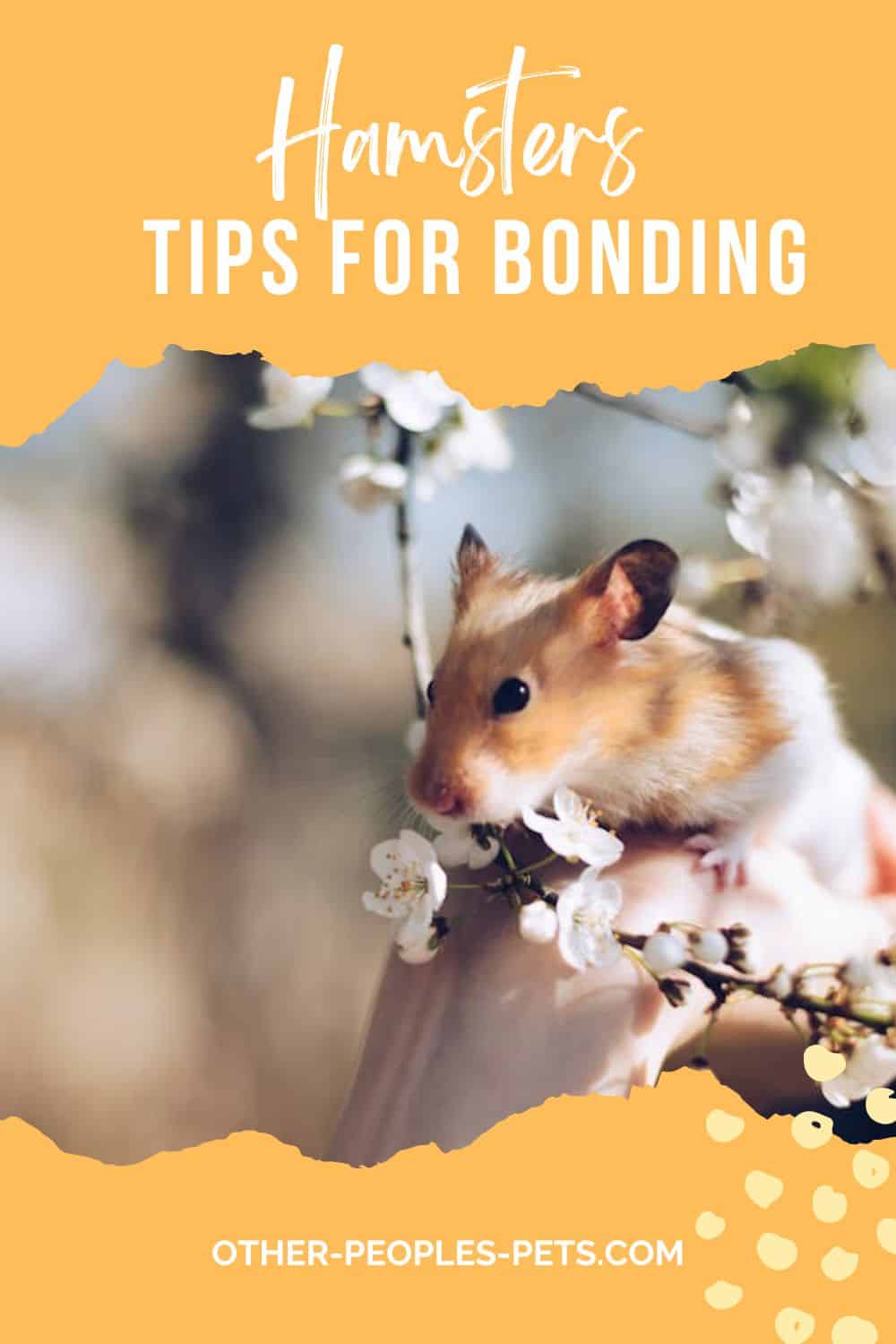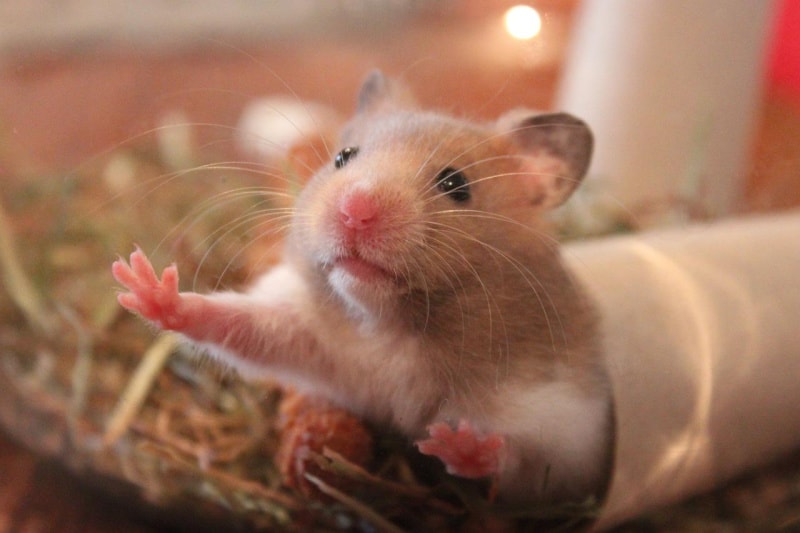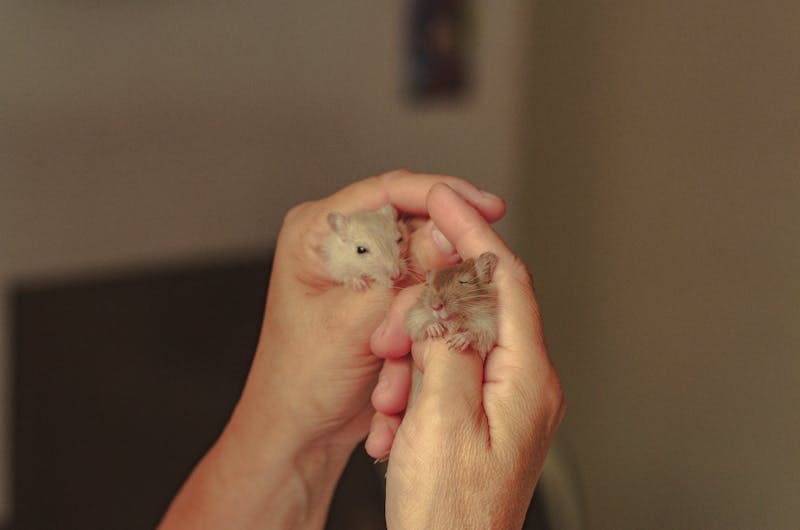Last Updated on March 14, 2024 by ellen
Wondering about bonding with your hamster? Learn How to Bond with Your Hamster: A Complete Guide for New Pet Owners.
Posts may be sponsored. This post contains affiliate links, which means I will make a commission at no extra cost to you should you click through and make a purchase. As an Amazon Associate I earn from qualifying purchases.
Table of Contents
How to Bond with Your Hamster
Welcoming a hamster into your home is a joyous occasion. These tiny, furry companions have a surprising capacity for connection and can become beloved members of the family. However, the path to bonding with your hamster can be as winding as the tunnels they love to burrow in. Here, we’ll explore the ins and outs of forming a meaningful bond with your pet hamster, providing the foundation for a lifetime of positive interaction and care.
Understanding the Timeline: How Long Does It Take to Bond?
Realistically, bonding with your hamster is a process that can occur at different paces, depending on the individual animal. While some hamsters are naturally more sociable and may take only a few weeks to warm up to you, others might require several months to build trust. The key to successful bonding is patience and consistency.
Setting Realistic Expectations
It’s crucial to approach the bonding period with patience. Identify progress in small, incremental steps rather than expecting immediate affection or comfort. Even if your hamster doesn’t seem to be responding to your overtures, don’t be discouraged. Each positive interaction, no matter how brief, is a step towards a stronger bond.
Creating a Safe Space
To minimize stress and encourage comfort, ensure your hamster has a sanctuary within its enclosure. This area should be quiet, dim, and undisturbed, with ample bedding and the necessities for nesting. Over time, as your hamster develops trust, its safe space can be in a shared and social area of the home.
Where Trust Begins: Getting Your Hamster to Trust You
Building trust is foundational to the bonding process. Start by familiarizing your hamster with your presence and scent.
Daily Interactions
Frequent, gentle, and predictable interactions help your hamster feel secure. Begin by talking to your hamster softly and offering treats through the cage bars. This will link your presence with positive experiences in the hamster’s mind.
Hand Taming
Hand taming involves getting your hamster used to your hand. Start by placing your hand in the cage daily, still and non-threatening. Gradually your hamster will begin to explore and climb over it. Then, offer a treat on your palm, and eventually, once your hamster is comfortable, it may even sit in your hand.
A Cuddle Bug? Making Your Hamster Cuddly
While hamsters may not be the cuddliest pets, many do enjoy interaction on their terms. It’s all about respecting your hamster’s comfort and personal space.
Respect Personal Space
Never force your hamster into a cuddle. Instead, offer your hand for your hamster to sniff and climb onto. Respect its signals and when it looks to retreat, allow it to do so.
Short, Positive Handling
Consistently handling your hamster for short periods (1-5 minutes) can build a positive association with you. Aim for a few sessions per day, gradually increasing duration as your hamster becomes more comfortable.
Showering Them with Love: Showing Affection to Your Hamster
Expressing love to your hamster is key to a strong bond. Fortunately, hamsters appreciate both physical and mental forms of affection.
Love in the Language They Understand
Your hamster won’t understand a hug, but it will appreciate your voice and scent. Regularly speaking to your hamster and offering safe, appropriate treats will reinforce positive feelings.
Interactive Toys and Habitat
Provide toys that allow you to interact safely, such as tunnels and playpens. Also, take part in enriching activities within the habitat, such as arranging the enclosure or playing games with your hamster.
Peer into the Past: Things I Wish I Knew Before Getting a Hamster
In hindsight, there are often insights that new hamster owners wish they knew. Here are a few.
Research and Prepare
Before bringing your hamster home, research its specific species’ needs. Consider the size of the enclosure, the type of bedding, and the diet.
Nocturnal Nature
Hamsters are nocturnal, which means they’re most active during the night. Plan your bonding sessions accordingly, respecting your hamster’s natural schedule.
The Art of Picking Up a Hamster Without Being Bit
Holding your hamster is a significant milestone in bonding — but it can be intimidating. Here’s how to do it safely.
The Scoop Technique
Always approach your hamster from the front. Gently scoop it up with both hands and support its full body. To the hamster, this mimics being picked up by another animal, which makes it feel more secure.
Staying Calm
Remain calm and deliberate in your actions. Any sudden movements can startle your hamster, so remember to move slowly.
In Closing
The bond you share with your hamster is uniquely special and continually evolving. By investing time and consideration into your pet’s care and comfort, you’ll lay the groundwork for a relationship full of mutual respect and joy. Remember, what you get out of the bond is directly proportional to what you put into it, so be patient, consistent, and always kind.
Happy bonding!
Encountering Challenges Along the Way
Even in the smoothest of bonding journeys, you may face setbacks or challenges that make you question your progress.
It’s entirely normal for a hamster to have off days where they seem less interested in interaction or even a bit more skittish or try to escape.
Remember, just like humans, hamsters too can experience mood swings due to a variety of factors such as slight changes in the environment, noise levels, or even their own health.
Adaptability is Key
When facing these challenges, the best approach is to be adaptable. If your hamster seems less inclined to be handled, take a step back and focus on other forms of interaction, such as talking to them or lightly playing games in their habitat.
This flexibility shows your hamster that you respect its needs and boundaries, which in itself can strengthen your bond.
Seeking Support
Should you encounter persistent issues or behaviors that concern you, don’t hesitate to reach out for support. Online communities, veterinary advice, and resources dedicated to hamster care can provide valuable insights and reassurance.
After all, part of bonding with your pet is learning from each other and growing together.

Ellen runs a small pet sitting business in southern Vermont. She has experience with a variety of small animals, dogs and cats. She has also cared for ducks, chickens and rabbits. Combined, she has over 20 years of experience in pet care and pet sitting.






